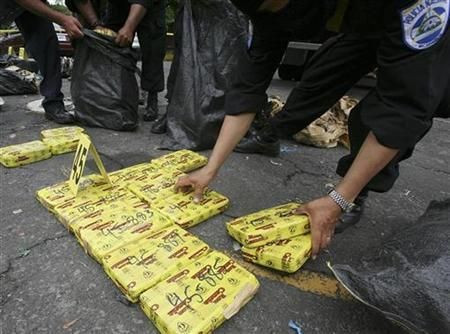
Costa Rica's Organization of Judicial Investigations (OIJ) has announced it will no longer send cocaine or any other controlled substance to the United States to be incinerated, according to the Costa Rica Star. The Central American country's law enforcement agency had temporarily been without an incinerator which could properly destroy powder cocaine, marijuana and other illicit substances seized by the bureau. With a massive backlog of drugs growing in agency warehouses, the OIJ reached out in July to the US Drug Enforcement Administration (DEA) for help. On July 27, almost 24 tons of seized cocaine was packed up on an airplane and flown to Miami to be disposed of there.
RELATED: Uruguay Legalizes Marijuana: Does The New Jose Mujica Law Mean A New Chapter In The Latin American War On Drugs?
The public affairs office of OIJ explained to newspaper CRHoy, which broke the story, that it had tapped the DEA for help because it did not have the resources necessary for incinerating some 23 tons and 780 kilograms of powder cocaine - a drug load accumulated over two years of anti-drug efforts by several Costa Rican law enforcement agencies. The operation was shrouded in secrecy; at least two magistrates with the OIJ were apparently unaware of it when newspaper CRHoy spoke to them for the story.
RELATED: Narcocorridos Banned In Chihuahua City
Costa Rica lies on an important drug smuggling route which runs from cocaine-producing countries like Bolivia, Colombia and Peru up into Mexico and eventually the United States. So much of it was confiscated, according to Costa Rican authorities, that it was piling up faster than they could burn it. And authorities' concerns that it would pose an irresistible temptation to those who knew about it were born out in 2009, when 20 kilograms of cocaine were stolen were stolen from a cement factory in Cartago where it was being stored. Two years later, employees with the OIJ were complaining that so much of the drug was crammed inside a warehouse in another cement factory that they couldn't even walk around it. After the cement factory donated a Jacuzzi-sized incinerator, OIJ agents began burning as much as 300 kilograms of cocaine an hour, but by February 2012, the device started to break down from overuse, occasioning the call to the DEA to help out.
RELATED: How Do Drug Dealers Select 'Blind Mules'?
"No, it's not normal," the OIJ's General Director's office told CRHoy. "It's extraordinary, and due to the fact that we don't have anywhere to destroy the drugs right now, especially in such elevated quantities such as that transported."
© 2025 Latin Times. All rights reserved. Do not reproduce without permission.



